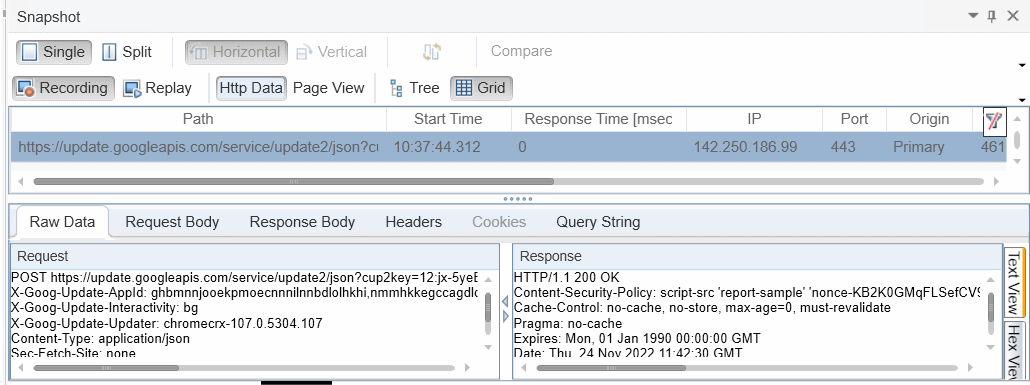Web snapshots
Note: Applies to: Web Vuser protocols. For a list of web Vuser protocols, see Web Vuser types.
Web Vuser scripts use VuGen's Snapshot pane.
- For details on how to work with the Snapshot pane, see Work with snapshots.
- For details on the Snapshot pane UI, see Snapshot pane.
The snapshots show detailed information about some of the steps in the Vuser script. Each snapshot can be displayed using either the Page view or the more detailed HTTP Data view.
The HTTP Data view displays each HTTP transaction in either a tree view or a grid view. The transaction data is broken up into response data, request data, headers, cookies, and query strings.

Data in the snapshots can be displayed in a number of formats: Data view, Text view, and Hex view.
You can split the Snapshot pane to display two snapshots - typically a record snapshot and the corresponding replay snapshot. If both snapshots are displayed in the HTTP Data view, you can click the Sync button  on the Snapshot pane toolbar to synchronize the data that is displayed in the two snapshots. For details, see Work with snapshots.
on the Snapshot pane toolbar to synchronize the data that is displayed in the two snapshots. For details, see Work with snapshots.
Correlations and parameters can be created on response data by selecting the relevant text and right-clicking.
For data that is difficult to work with (such as binary data), VuGen offers a variety of Data Format Extensions that can transform certain data types into more readable formats. Data that has been formatted by a Data Format Extension can be displayed in its original or formatted state. For more information, see Data format extensions (DFEs) overview.












